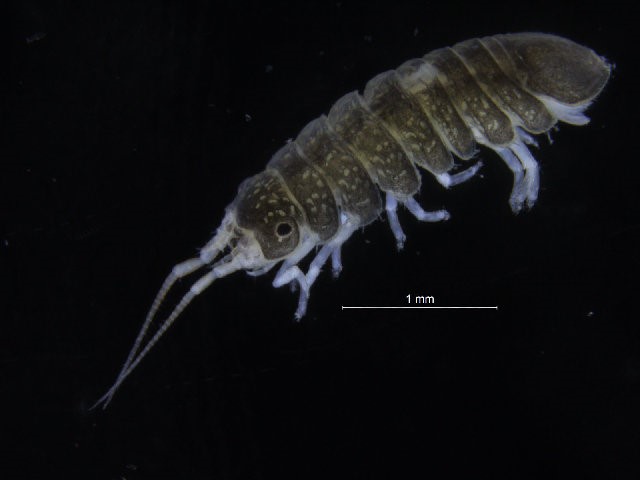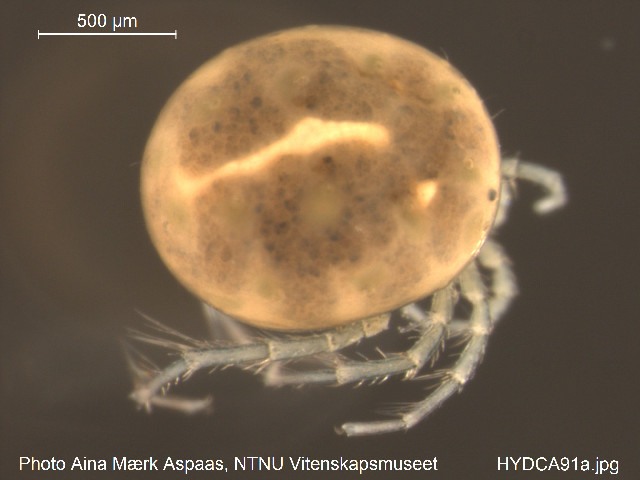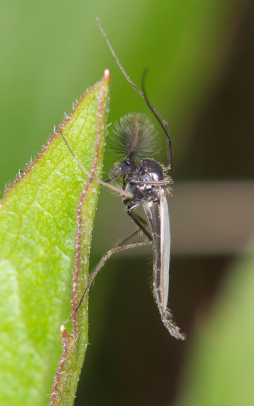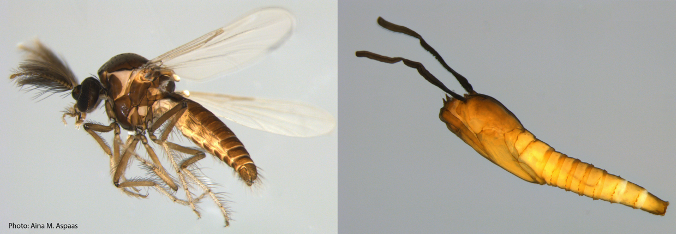Master student projects
Master student projects in TAXA
TAXA welcomes new students to do their master projects on topics related to our main research area. Please contact any of us if you are interested! Below is a list of current projects by master students in our group, and a few projects where new students are invited.
Using morphology and DNA barcoding to assess species diversity of isopods in marine rocky shallow-water habitats in Norway.
Student: August Rustad Nymoen
Supervisors: Torkild Bakken, Jon Anders Kongsrud.
The marine members of the order Isopoda consist of several species distributed across a wide variety of marine habitats, all the way from the intertidal zone down to the deep hadal zone. The knowledge base on the marine species of this order in Norway has potential for improvement especially in terms of ecology and distribution, but also in their taxonomy. While many species, genera and families are easily distinguishable, some, like the members of the Jaera albifrons group, can prove quite difficult if not impossible to distinguish based solely on morphology.
As a part of the Invertebrate fauna on marine rocky shallow-water habitats project, this study will use DNA barcoding and a morphological analysis to assess the species diversity of isopods in Norway. These methods will aid in the discovery of potential cryptic species and determining species boundaries while ArcGIS Pro will be used to illustrate distribution. The study will only include specimens found on hard substrates within the euphotic zone in order to increase the knowledge of faunal composition within these particular marine habitats. In addition to a general assessment of the Isopoda order, a stronger emphasis will be made in describing the members of the families Janiridae and Idoteidae.

Integrative taxonomy and species delimitation in the Lebertia porosa species complex (Acari, Parasitengona: Hydrachnidia)
Student: Valentina Tyukosova
Supervisors: Torbjørn Ekrem, Elisabeth Stur, Reinhard Gerecke (Tübingen)
This project on the Lebertia porosa species complex is a part of an ongoing effort to clarify the taxonomy and distribution of water mites in southern Norway. The water mites of Norway are not very well studied, and their true diversity is estimated to be much higher than the current number of known species. Moreover, many groups have challenging taxonomy in need of revision, making identification difficult. This poses a problem, as water mites would likely be an excellent tool in assessment of water quality. The L. porosa species complex will be examined both genetically and morphologically to determine whether new species are present and whether these are cryptic species or species with morphological differences previously assumed to be within-species variation.

Species delimitations in selected groups of beetles (Coleoptera) in northern Europe (project for Master thesis)
Students: Wanted!
Supervisors: Frode Ødegaard, Mika Bendiksby, Torbjørn Ekrem
The beetle fauna in northern Europe is generally well known when it comes to taxonomic borders between species, but still there are difficult taxonomic complexes where species limits are discussed or controversial. Modern methods with use of molecular data combined with traditional methods provide unique possibilities to resolve such research questions today.
We propose a study combining morphological measurements and data from different gene segments of mitochondrial and nuclear DNA to infer phylogenetic relationship. Material would be available from museum collections, private collections and own field work. There are several possibilities for choosing a species complex among insects for a master thesis in this topic, but we advice to choose a complex where material is easy to obtain and specimens are not too small and difficult to handle.
Master projects – marine biology
Students: Wanted!
Supervisor: Torkild Bakken
We explore the fauna, species diversity and distribution along the Norwegian coast and in the deep Norwegian Sea. Projects will include taxonomy of different marine organisms, description of species, and assessment of diversity. We regularly find species new to science and learn a lot about species' distribution that previously have been overlooked or never dealt with. Through morphological and molecular identification of specimens we make descriptions and keys for identification. Integrated with DNA barcoding, new insight in our diversity is assessed, often leading to higher diversity measures than we thought we had. Would you like to contribute to obtain a better understanding of our marine biodiversity?
You will learn: identification of species by morpholgy and DNA barcoding; field work, use of different methods and sampling gear; use GIS to assess distribution; how scientific collections in museums work, and contribute to them; assess nature types. Sampling methods may include both traditional gear for soft and hard bottom habitats, but also technology using under water robotics.
Genetic diversity in closely related non-biting midges
Students: Wanted!
Supervisors: Elisabeth Stur, Torbjørn Ekrem

NTNU University Museum
Non-biting midges (Diptera: Chironomidae) is one of the most species rich insect families on earth and many species are difficult to separate. Thus, identification using standard genetic markers (so-called DNA barcoding) is particularly useful when studying diversity of non-biting midges. Recent studies have shown that midge species diversity is larger than originally thought based on morphological analyses. This cryptic diversity will be investigated through several student projects that are focused on species groups with northern distributions.
The main goal will be to investigate if separate populations of selected midge species can be separated genetically and morphologically, and if they should be regarded as separate species.
Some fieldwork in Norway or other Nordic countries will be an advantage, but not necessarily required due to our existing comprehensive collection at the NTNU University Museum. Practical work includes collection, sorting, slide mounting and identification of all life stages. The projects involve digital microscopy and molecular analyses in the laboratory facilities at the museum. Data will be analysed using available phylogenetic, bioinformatic and biogeographic tools.
Genetic diversity and species boundaries in biting midges (Ceratopogonidae)
Students: Wanted!
Supervisors: Elisabeth Stur, Torbjørn Ekrem
The biting midges (Ceratopogonidae) are tiny flies which are represented in the world fauna by 6 subfamilies, 131 genera and over 6500 extant and fossil species. Except for the Antarctic, the recent biting midges are found on all continents. Larvae of the biting midges live in a wide range of aquatic and semi-aquatic habitats such as lakes, ponds, rivers, springs, swamps, peat bogs, pools, or wet soil. They inhabit freshwater, marine and inland saltwater. Some species are truly terrestrial and are found under bark, in sap oozing from trees, rotting plants and fungi, among wet mosses and algae, in ant nests and animal dung.

The main goal of the thesis is to investigate if populations of Dasyhelea modesta should be regarded as separate species. Dasyhelea modesta is characterised by rather unique pupae, adult males and females, at least at first glance. However, the species currently has as many as eight younger synonyms, described from various parts of the Palaearctic Region. Although this species seems to be well-defined morphologically, specimens from different populations show significant divergence in DNA sequence data.
This project will include fieldwork and use the collection at the NTNU University Museum. Practical work includes collection, sorting, slide mounting and identification of all life stages. The projects involve digital microscopy and molecular analyses. Data will be analysed using available phylogenetic, bioinformatic and biogeographic tools.